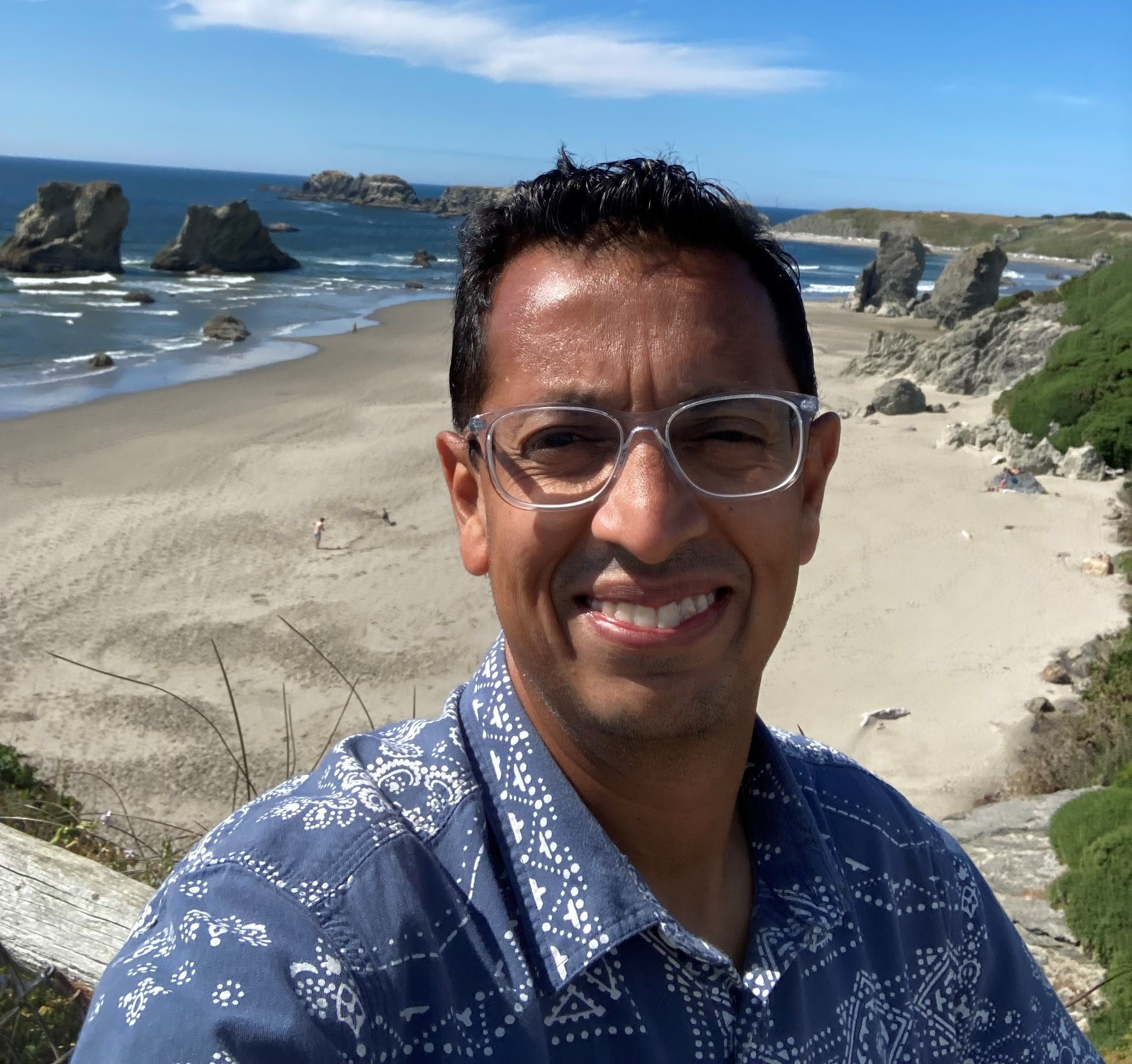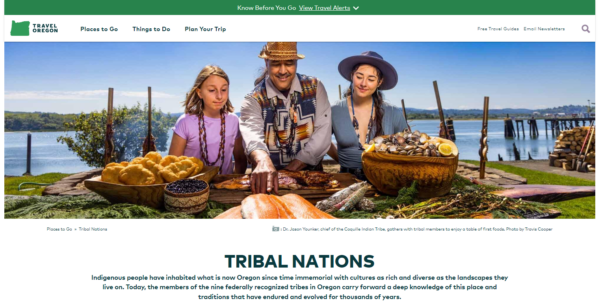When Mo Sherifdeen joined Travel Oregon 19 years ago, he was the first person hired to work on the website.
His role as web manager involved uploading documents and images via FTP sites. In other words, he was a glorified pixel pusher (the digital version of a pencil pusher).
As the digital landscape expanded, so did the importance of content in tourism. So, in 2010, Oregon’s tourism agency united its content efforts into a cohesive, structured unit and put Mo in charge.

B2C Content Marketer of the Year Finalist
“By the time we grew on social and added more channels to the mix, the one team made a lot of sense. We were luckily ahead of the curve,” he says.
The editorial goal of the content team is to be the trusted source for trip inspiration and information. To support that mission, the team publishes content to ignite a traveler’s desire to experience Oregon.
And it’s doing something (or many things) right: In 2024, Travel Oregon took top honors for Best Content Strategy in the Content Marketing Awards, and Mo earned recognition as a finalist for B2C Content Marketer of the Year.
Growing as a united team
Today, the one-team approach encompasses Travel Oregon’s marketing and sales staff. Now called the brand stewardship team, it’s charged with building brand awareness for Oregon globally and inspiring travel that uplifts Oregon communities.
About half of Travel Oregon works on the brand stewardship team. The other half works on the B2B side — focusing on the individual destinations and businesses that benefit from travel and tourism.
Together, the team balances Oregon’s economic, environmental, and social/cultural needs while working closely with the state’s tourism industry and residents.
The brand stewardship team includes a brand services group, which focuses on campaign execution and works with Travel Oregon’s ad, social, digital, and publishing agencies. It also supports the global sales team and the integrated marketing department, which Mo leads as the director of global integrated marketing and publishing.
Integrated marketing, also part of the brand stewardship team, includes these roles:
- A managing editor who looks at what Travel Oregon says across its channels
- A production editor who oversees social media and website production
- A digital platforms manager who is responsible for website innovations
- A listing manager who handles all list-related content, such as hiking trails and events, on TravelOregon.com and third-party sites
- An information specialist who manages Travel Oregon’s listings on third-party sites, among other duties
- An analyst who closely watches SEO, site speed, and UTMs to monitor performance vs. ad spend
- A team coordinator who helps organize the work
“It’s a lot of collaboration,” Mo says.
Several agency partners support the team, and Mo stresses the importance of bringing them in at the concept stage rather than handing over a final campaign to execute.
“If they feel like a concept is not going to fly or is not something our community would respond to, then they flag it up front,” he explains.
Travel Oregon also avoids being the gatekeeper for the agencies. It encourages its ad, social, digital, and publishing agencies to work directly with each other.
“They’re empowered to pick up the phone and call each other and build that relationship,” Mo says. “They’re all singing from the same songbook and pitching us on the same idea.”
It works well partly because the agency partners have worked with Travel Oregon for so long: 30+ years in one case and six years in another.
Embarking on an equitable journey
That leadership support isn’t just about empowering the teams behind the scenes. It also extends to Travel Oregon’s strategic vision — driving equitable economic impact from tourism across the state and being welcoming to all.
That means promoting lesser-known tourist destinations and not marketing the places everybody goes to in the prime tourist season. It means attracting diverse audiences, such as the LGBTQ+ community or travelers with disabilities, and showcasing previously untold stories about the area’s first inhabitants.
“You can’t be welcoming to all if you’re not an accessible place,” Mo says. “We have a huge network, but ultimately, it’s limited to people who subscribe to us. So, we use influencers to broaden our reach into those communities,” Mo says.
That’s why they worked with Ravi Roth, the host of Ravi Around the World. An influencer in the LGBTQ+ community, Ravi was thrilled when Travel Oregon invited him to come in July because he’s overwhelmed with invitations in June – Pride Month.
“That’s just an example of trying to be mindful that people are here year-round. We can’t just think about them for Black History Month or Pride Month,” Mo says.
Ravi’s adventure included this Reel posted on Travel Oregon’s Instagram account.
“We’re trying to make sure that we have equitable representation in our content so that it’s not just lip service,” Mo explains.
Travel Oregon also worked with Kelcie Miller, the Chronic Explorer, a disabled environmental scientist and social entrepreneur who explores the world.
Accessible travel also involves tourism related to the first Oregonians — the federally recognized tribes of Oregon.
Travel Oregon worked with a tribal editorial steering committee that guides the content work and recruits tribal writers and photographers to help execute it. It published two tribal guides to help travelers experience Indigenous culture in Oregon. It also created a Tribal Nations section under Places to Go on the Travel Oregon website that showcases the nine tribal nations in Oregon.

Each nation’s guide includes tips on visiting, short articles on places to see, and deeper long-form content. For example, in Keeping a Native Language and Culture Alive, author Riley Rice, a member of the Cow Creek Band of Umpqua Indians, tells the story of Warm Springs, weaving in the cultural traditions, tales of its people, and places to visit — from a museum to outdoor adventure spots.
Images and a video from Wahoo Films punctuate the wonderfully written long-form text:
“When it comes to work, we want to do it in a way that’s mindful and respectful,” Mo says.
Millions embrace Travel Oregon and boost economic impact
The welcoming strategy works, as Travel Oregon reported in its Content Marketing Awards submission:
- TravelOregon.com, the content hub for both inspiration and nitty gritty logistical content, attracts 9 million page views and 4 million sessions a year.
- Print guides serve up information for travelers on the ground. About 500,000 copies are printed and distributed. Digital versions are also available.
- Its social channels’ content reached users’ feeds 41 million times in one year.
More than that, Travel Oregon’s content has a financial impact.
Visitors to the website are most likely to spend $1,000 or more a day on their trip. They also are more likely to have viewed an online destination travel guide, read a travel article on the site, and used the printed destination guide.
A 12-month analysis (done using pre- and post-surveys of website visitors about the site’s impact on their trip) showed a $48.9 million economic impact from the 25,255 incremental trips made by out-of-state website visitors who hadn’t committed to traveling to Oregon until after they visited the site.
The analysis also found a $6.2 million economic impact from 16,190 new visitor days — the time out-of-state website visitors extended their stay in Oregon. Seventy-three percent of out-of-state visitors increased their stay by an average of 2.2 days, and 36% of in-state visitors stayed an average of 1.9 days longer.
What makes the content strategy work
Many factors go into Travel Oregon’s success (a small but mighty team, support for thinking outside the travel box, collaborative agencies, etc.).
But Mo and the team also aim for more than engagement. Getting a like on an Instagram image of a beautiful Oregonian sunset is never the goal because inspiration without information is meaningless.
Yes, they want the photo to attract attention and pique curiosity so Travel Oregon can share practical information about the place, the people who live there, the best time to visit, etc.
But Mo says success boils down to one thing.
“Building trust and doing it consistently through inspirational educational content is huge,” he says.
HANDPICKED RELATED CONTENT:
Cover image by Joseph Kalinowski/Content Marketing Institute
